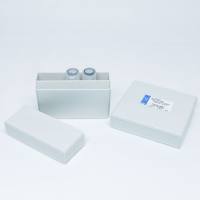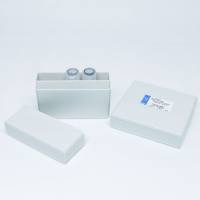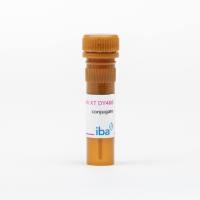It was recognized early last century that small molecules, known as haptens, can be made immunogenic after conjugation to carrier proteins (
1
). This principle has since been applied successfully to improve the immunogenicity of (poly)saccharides (
2
,
3
). We now know that the carrier proteins ensure the involvement of T-helper lymphocytes in the activation of the hapten- or polysaccharide-specific antibody-producing B lymphocytes (Fig. 1 ). In contrast to small molecules or haptens, polysaccharides (or other macromolecules with a repeating structure) are able to induce an immune response, most likely by directly activating B-lymphocytes. Antigens that are able to induce an immune response without the involvement of T-helper lymphocytes are referred to as TI (thymus-independent) antigens (
4
) (Table 1 ). TI-2 antigens, such as plain polysaccharides, are not able to activate relatively immature B-cells. This is in contrast to TI-l antigens, which can activate immature B-cells because of their mitogenic activity. Lipopolysaccharides (LPS) are examples of TI-l antigens. Conventional T-cells recognize peptide sequences in association with the major histocompatibility complex (MHC). Recently, unconventional T-cells were found to recognize (glyco) lipids in a CD1-restricted way, γδT-cells were shown to respond to non-proteinaceous microbial ligands (that may include carbohydrates) in a virtually MHC-unrestricted way (
5
). The findings of T-cell regulation of the immune response against polysaccharides (
6
–
8
) without biochemical demonstration of the specificity of the molecular interactions can best be explained by assuming a role for anti-idiotypic antibodies and T-cells specific for the idiotopes (carbohydrate mimotopes) or via the newly discovered unconventional T-cells.
Fig. 1.
Polysaccharides are poor in activating B-cells to the production of antibodies in children younger than 2 yr of age. If antibodies are formed, they are of short duration. For conjugate vaccines T-cells are involved in the activation of B-cells. Presumably, the conjugate is taken up by polysaccharide-specific B-cells, processed, and presented to carrier-specific T-cells. The involvement of T-cells results in the activation of B-cells to production of antibodies and induction of memory in children younger than 2 yr of age.
Table 1
Characteristics of T-Cell Independent Antigens
|
Type 1
|
|
| |
Bacterial cell-wall components
|
| |
Mitogenic or polyclonal B-cell activator
|
| |
Stimulate antibody responses in neonates
|
| |
Stimulate antibody responses in CBA/N mice
|
| |
Examples: lipopolysaccharide and hapten derivatives;
Brucella abortus
|
|
Type 2
|
|
| |
Polysaccharides, polypeptides, polynucleotides
|
| |
High mol wt, multiple repeating antigenic determinants
|
| |
Slowly metabolized
|
| |
Tolerogenic in large doses or soluble form
|
| |
Activate alternative complement pathway (some)
|
| |
Generate few (if any) memory B-cells
|
| |
Restriction of isotypes induced
|
| |
Lack of affinity maturation
|
| |
Lack of T-cell memory
|
| |
Fail to stimulate antibody responses in neonates
|
| |
Fail to stimulate antibody responses in CBA/N mice
|
| |
Examples: Pneumococcal polysaccharides;
Haemophilus influenzae
type b polysaccharide; meningococcal polysaccharides
|








